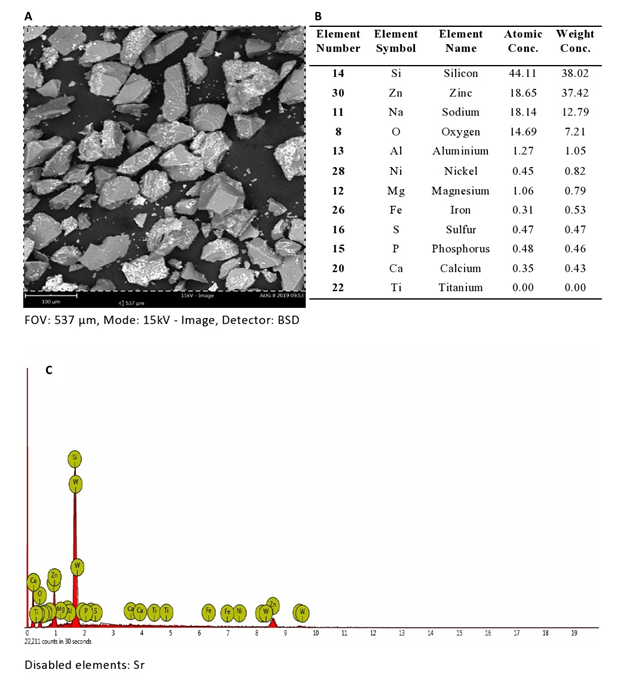A Novel developments of ZnO/SiO2 nanocomposite: a nanotechnological approach towards insect vector control
Keywords:
Culex quinquefasciatus, Vector control, Nanotechnological, ZnO@SiO2 nanocompositeAbstract
Recently, there is increasing efforts to develop newer and effective larvicides to control mosquito vectors. This study was carried out to examine the efficacy of ZnO/SiO2 nanocomposite synthesized using Gum Arabic against Culex quinquefasciatus larvae. The elemental composition, morphology, functional groups and surface plasmon resonance of the ZnO@SiO2 nanocomposite was analyzed by Energy dispersive X-ray analysis (EDX), Scanning electron microscope (SEM), FTIR and UV-Visible spectroscopy respectively. In bioassay, larvae were exposed to three different concentrations of synthesized ZnO/SiO2 nanocomposite. The mortality rates at concentrations of 10, 20 and 25 were found to be (70%, 80%, 86%), (56%, 64%, 84%) and (44%, 48%, 76%) for 1st, 2nd, and 3rd instar respectively. This study revealed that the synthesized ZnO@SiO2 nanocomposite exhibit high larvicidal activity; 1st instar (LC50=4.024, LC90= 39.273 mg/l), 2nd instar (LC50=8.767, LC90=51.069 mg/l) and 3rd instar (LC50=13.761.LC90=81.809 mg/l).

Published
How to Cite
Issue
Section
Copyright (c) 2021 Journal of the Nigerian Society of Physical Sciences

This work is licensed under a Creative Commons Attribution 4.0 International License.







